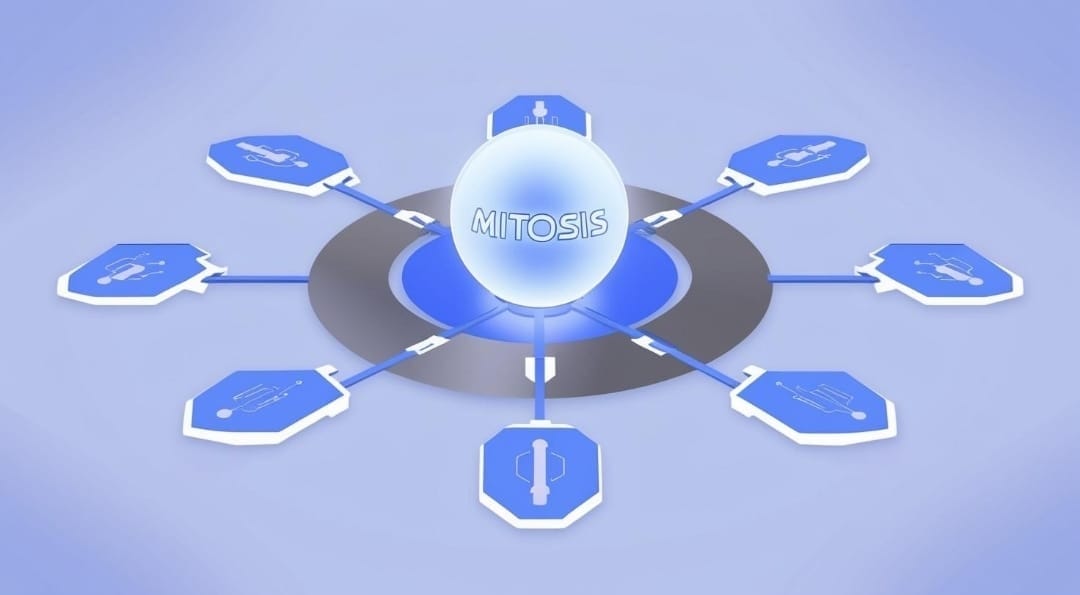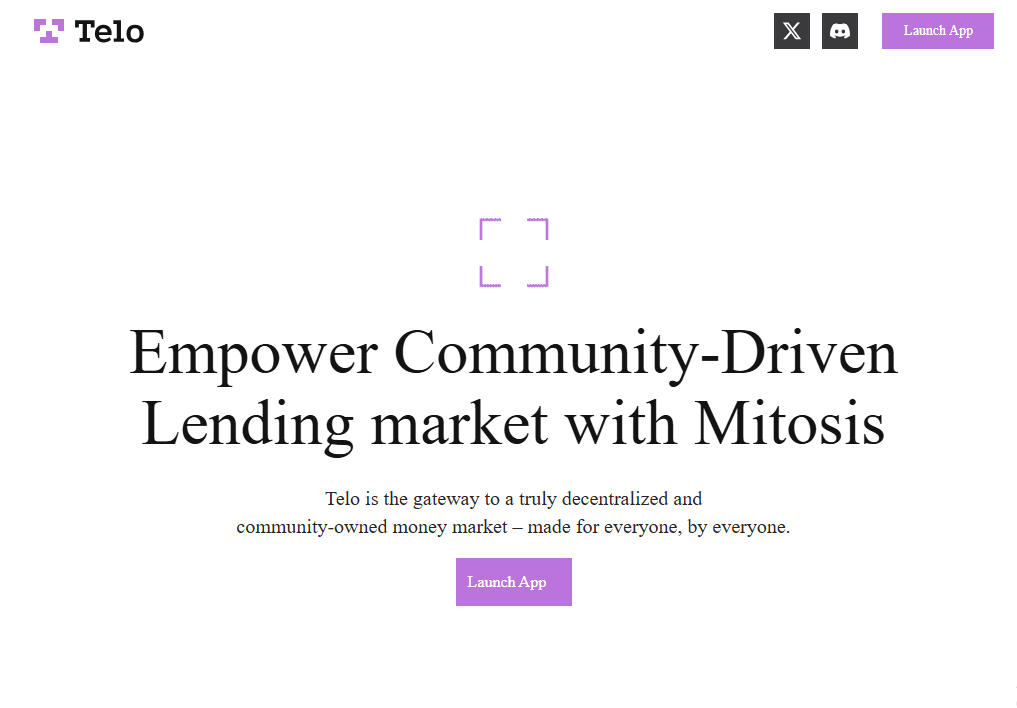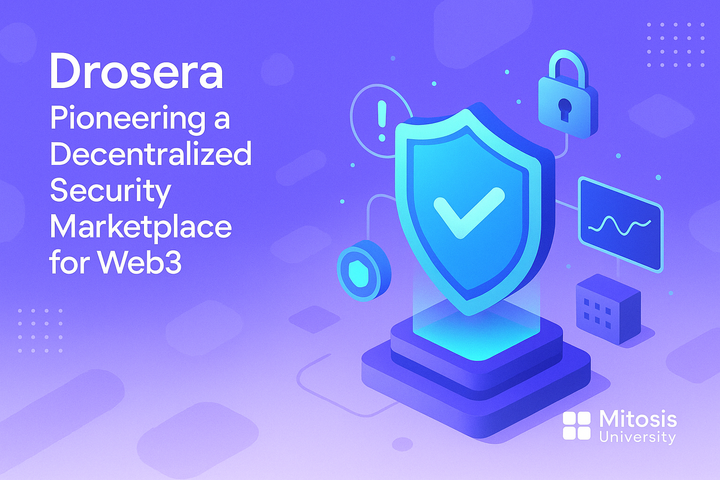The Difference Between EOL and Matrix Vaults Explained Simply

In the world of decentralized finance (DeFi), things can get complex. But Mitosis is making it easier for users to move their money across different blockchains while keeping control and earning more from their crypto.
Two important parts of the Mitosis system are:
- EOL (Ecosystem Owned Liquidity)
- Matrix Vaults
Although they both help power the Mitosis ecosystem, they serve different purposes. In this article, we’ll break down exactly what they are, how they work, and how they’re different all in simple words you can easily understand.
First, What Is Mitosis?
Mitosis is a cross-chain liquidity protocol. That means it lets people move their crypto across different blockchains like Ethereum, Arbitrum, Base, and others with no need for bridges, wrapped tokens, or centralized exchanges.
Mitosis was created to solve the problem of fragmented liquidity in DeFi. Right now, most tokens are stuck on one chain. If you want to use them somewhere else, it’s usually expensive, risky, or slow.
Mitosis changes this by:
- Making liquidity available across chains
- Giving users control over their funds
- Offering tools that are fast, safe, and flexible
To make all this work, Mitosis uses a powerful design made up of parts like Matrix Vaults and EOL (Ecosystem Owned Liquidity).
What Is EOL (Ecosystem Owned Liquidity)?
Let’s start with EOL, which stands for Ecosystem Owned Liquidity.
In Simple Words:
EOL is like the shared liquidity reserve of the Mitosis ecosystem. It’s the protocol’s own capital, used to make sure things run smoothly like helping users move money across chains even when user liquidity isn’t enough at the moment.
It acts as the backup engine or liquidity safety net for the entire Mitosis system.
Why “Ecosystem Owned”?
Because the liquidity in EOL doesn’t belong to any single user. It’s owned by the Mitosis protocol itself, and it exists to serve the whole community. That’s why it’s called ecosystem owned, the liquidity is there to power the system for everyone.
It’s protocol-owned, but it works for the benefit of all users.
How EOL Works
Let’s imagine a user wants to transfer USDC from Ethereum to Arbitrum.
Normally, Mitosis uses user-supplied liquidity in Matrix Vaults to handle that transaction. But what if the vault doesn’t have enough funds on Arbitrum to complete it?
That’s where EOL steps in.
EOL:
- Provides extra liquidity when needed
- Balances supply and demand across chains
- Ensures transactions don’t fail due to lack of funds
- Maintains user experience even in high-volume moments
Afterward, when user liquidity catches up, the protocol can reimburse the EOL reserve, keeping everything balanced over time.
What Are Matrix Vaults?
Matrix Vaults are the user-facing vaults in the Mitosis ecosystem. They are programmable liquidity containers, meaning they don’t just store your tokens, they can do things with them.
In Simple Words:
Matrix Vaults are where users deposit their crypto, and from there, they can:
- Earn passive yield
- Move assets across chains
- Interact with DeFi tools
- Stay in full control without locking funds
They are flexible, chain-aware, and composable which means they can work with other protocols and smart contracts.
How Matrix Vaults Work
When you deposit into a Matrix Vault (say, USDC on Ethereum), your tokens become part of the active Mitosis liquidity network.
From that vault, your tokens can:
- Be routed to other chains when needed
- Be used in cross-chain swaps
- Earn optimized returns from yield strategies
- Be withdrawn instantly at any time
Each vault is programmable, meaning developers can build smart logic on top of it, like auto-rebalancing, dynamic yield strategies, or DeFi integrations.
So while EOL is a system-owned reserve, Matrix Vaults are user-owned gateways.
Key Differences Between EOL and Matrix Vaults
Let’s make it really simple with a side-by-side comparison:
| Feature | Matrix Vaults | EOL (Ecosystem Owned Liquidity) |
|---|---|---|
| Who Owns It? | Users | The Mitosis Protocol |
| Who Uses It? | Users | The protocol uses it internally |
| Visibility | Fully visible and accessible | Mostly behind the scenes |
| Control | Controlled by users | Controlled by protocol logic |
| Main Function | Store and grow user deposits | Backstop liquidity, fill gaps |
| Yield | Earned by users | Used to strengthen system stability |
How They Work Together
Matrix Vaults and EOL are like two hands working together:
- Matrix Vaults are where users store and use their funds.
- EOL ensures that those funds can always be moved and accessed, even during high demand.
Let’s use an example:
A user deposits USDC on Ethereum and wants to move it to Base. The Matrix Vault checks if there’s enough liquidity on Base. If not, EOL steps in to complete the transaction without delay. Later, the system rebalances itself using fresh deposits or new liquidity inflows.
Without EOL, transfers might fail or get delayed.
Without Matrix Vaults, users wouldn’t have a place to store and use their funds.
Both are critical.
Why Is EOL Important?
EOL solves several problems in DeFi that affect user experience:
- Liquidity Gaps
- Sometimes user deposits aren’t perfectly balanced across chains.
- EOL fills in the gap to prevent friction.
- Efficiency
- Keeps transactions smooth, even when things get busy.
- Security
- Funds come from a protocol-controlled source, so they’re handled carefully.
- Predictability
- Ensures users don’t experience random delays or failed actions.
By owning its own liquidity, Mitosis doesn’t have to depend 100% on users or external protocols. That makes the whole ecosystem more reliable and self-sustaining.
Why Are Matrix Vaults Important?
Matrix Vaults are where users experience the magic of Mitosis. They offer:
- Flexibility – move assets, earn, and interact with dApps
- Yield – earn from liquidity provision
- Simplicity – one deposit unlocks many features
- Access – available across multiple chains
These vaults make DeFi feel user-friendly, even though the tech behind them is advanced.
Real-World Example: How It Works in Practice
Let’s meet Larry.
Larry has $3,000 in USDC on Arbitrum. He wants to:
- Earn some yield on it while he waits
- Move it to Optimism later when he sees an opportunity
Here’s what happens:
- He deposits into a Matrix Vault on Arbitrum.
- His USDC starts earning yield.
- A few days later, he clicks “Transfer to Optimism.”
- The Matrix Vault processes the request, but there’s not enough USDC on Optimism.
- EOL steps in, completes the transfer.
- His funds arrive in seconds on Optimism.
- The EOL pool gets reimbursed over time from new liquidity flows.
Larry didn’t have to worry about bridges, slippage, gas spikes, or technical delays. That’s what Mitosis is built for.
For Builders and Developers
- Matrix Vaults: Offer programmable liquidity. Developers can plug into them and create custom strategies, apps, or integrations.
- EOL: Provides backend liquidity safety, ensuring the system can handle volume, speed, and unexpected demand.
Together, they provide a powerful base for building next-gen DeFi products.
Conclusion: Two Pillars of the Mitosis Ecosystem
To wrap it up:
- EOL (Ecosystem Owned Liquidity) is Mitosis' protocol-owned reserve that steps in when needed to maintain a smooth user experience.
- Matrix Vaults are the user-facing smart vaults where people deposit their crypto to earn, move, and interact across chains.
They’re not competitors, they’re partners. One handles the backend, the other powers the frontend. One works silently in the background, the other offers powerful tools to users.
Together, they:
- Solve fragmented liquidity
- Offer smooth cross-chain actions
- Keep users in control
- Build the future of programmable finance
So whether you're a user trying to earn yield across chains or a builder designing the next DeFi app, understanding EOL and Matrix Vaults is key to navigating the Mitosis ecosystem.



Comments ()